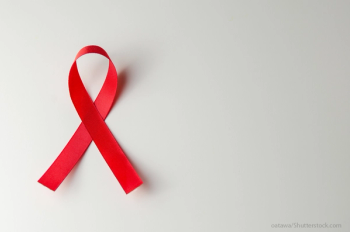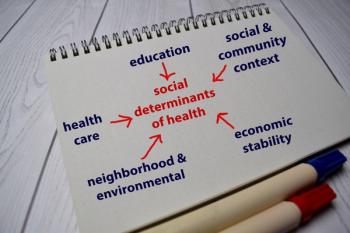
Biden is proposing a $46 million increase to the Ryan White HIV/AIDS Programs and $20 million for HUD’s Housing Opportunities for Persons with AIDS program. However, no increases were planned for hepatitis programs.

Biden is proposing a $46 million increase to the Ryan White HIV/AIDS Programs and $20 million for HUD’s Housing Opportunities for Persons with AIDS program. However, no increases were planned for hepatitis programs.

The FDA approved Amgen’s Lumakras (sotorasib) last week, the first drug targeting KRAS-mutated cancer to get the agency’s OK. But the clinical and commercial future of the drug is uncertain.

The Association of Community Cancer Centers launched the ACCC Community Oncology Research Institute, which builds on the organization's mission to close the gap in cancer research through optimal community oncology partnerships.

The CDC estimates that on any given day, 1 in 31 hospital patients and 1 in 43 nursing home residents has a healthcare-associated infection, which is an infection that occurs while being treated in a medical facility.

Patients with Alzheimer’s disease or who were at high risk for the disease had a weaker correlation between brain activity and cerebrospinal fluid flow while sleeping.

COVID-19 vaccination race among pharma giants results in brand value growth – Pfizer up 6%, AstraZeneca up 18%, and Sinopharm up 58%.

More flexible “in lieu of services" and pooled funding arrangements could help build a more integrated healthcare system so efforts to address the social determinants of health are prioritized and paid for says Healthify co-founder and CEO.

NCCN recommends Brukinsa for CLL/SLL even though it is FDA-approved for mantel cell lymphoma.

In this week’s episode of Tuning In to the C-Suite podcast, MHE Associate Editor Briana Contreras spoke with Ash Shehata, KPMG’s national sector leader for healthcare & life sciences. The two chatted about a recent paper by KPMG titled “From payor to healthcare partner,” which highlights how the pandemic drove changes for plans to adopt a patient-centric model and it gives a look into the six healthcare trends to watch for in 2021.

Tumors glow pink under blue light.

Meta-analysis shows lower prevalence of four known driver mutations among Black lung cancer patients. More research into tumor biology of Black patients might yield targeted therapies that would benefit Black lung cancer patients, says the lead author, Philippos A. Costa, M.D.

Around 49% of the more than 300 healthcare providers, hospital/health system executives, payers, advocacy groups, and academics surveyed by Get the Medications Right™ (GTMRx) Institute said the cost of healthcare is the biggest issue they face.

Prevalent cases of opioid use disorder could total around 1.9 million in 2021 and could cost the U.S. billions to treat, data and analytics firm GlobalData said.

Patients who were PD-L1 positive with early stage non-small-cell lung cancer had better results and a lower risk of death or progression compared to a cohort on best supportive care.

There are three key facets that must be considered in order to meet the demands of an endemic - the ongoing acceptance of a baseline of COVID-19 infection rates that will be maintained for the foreseeable future.

Another 20% of Medicaid members say they aren't sure if their plan offers such programs, according to a recent Icario and Harris poll.

Results suggest that providers won’t be penalized in patient experience scores if they say no to ordering unnecessary tests and procedures such as a PSA test for an older men or head imaging for a patient with uncomplicated headache.

The FDA gave its first approval today of a cancer drug that targets a KRAS mutation.

In the four months between February and May, roughly 5.4 American workers lost their coverage.

Acquisition to unite previously fragmented provider and payer insights to drive optimal healthcare outcomes.

To make patient-generated health data work for clinicians, health information technology vendors must effectively integrate this patient-generated data into clinical workflows in a way that helps clinicians do their jobs more efficiently and effectively.

International comparisons shed light on responses to pandemic and strategies for vaccination and reopening.

Managed Healthcare Executive's Senior Editor, Peter Wehrwein, and Associate Editor, Briana Contreras, spoke with MHE Editorial Advisory Board Member Lili Brillstein for a new episode of the "Meet the Board" series on "Tuning In to the C-Suite" podcast. Lili is CEO of BCollaborative, which works with stakeholders across the healthcare continuum to successfully make the move from fee for service to value-based healthcare. In this episode we get to learn a bit more about Lili's career and hear her thoughts on the advancements of episodes of care, as well as the challenges of transitioning from fee-for-service to value-based care during COVID-19.

Hang up the masks, Dr. Sachin Nagrani, medical director of telemedicine/home doctor visit service Heal, says there is light at the end of the tunnel for public health and those newly infected by COVID.

In the post-pandemic future, we will likely see that hybrid patient care models are the norm. As hospitals and health systems plan for this shift, they’ll need to consider two critical factors.

A virtual summit on urothelial cancers is scheduled for October.

About 2% to 3% of patients with nonsmall cell lung cancer have EGFR exon 20 insertion mutations targeted by newly approved Rybrevant.

It is undoubtable that the role of telehealth technology has soared throughout the pandemic, achieving levels of adoption that were previously thought unattainable. However, appetites are changing drastically, the question is now; what role can telehealth play in emergency medicine?


Two of the biggest issues in healthcare, currently, are the lack of communication between prescribers and pharmacists, and the number of factors that prevent healthcare professionals from offering patient-centric services.